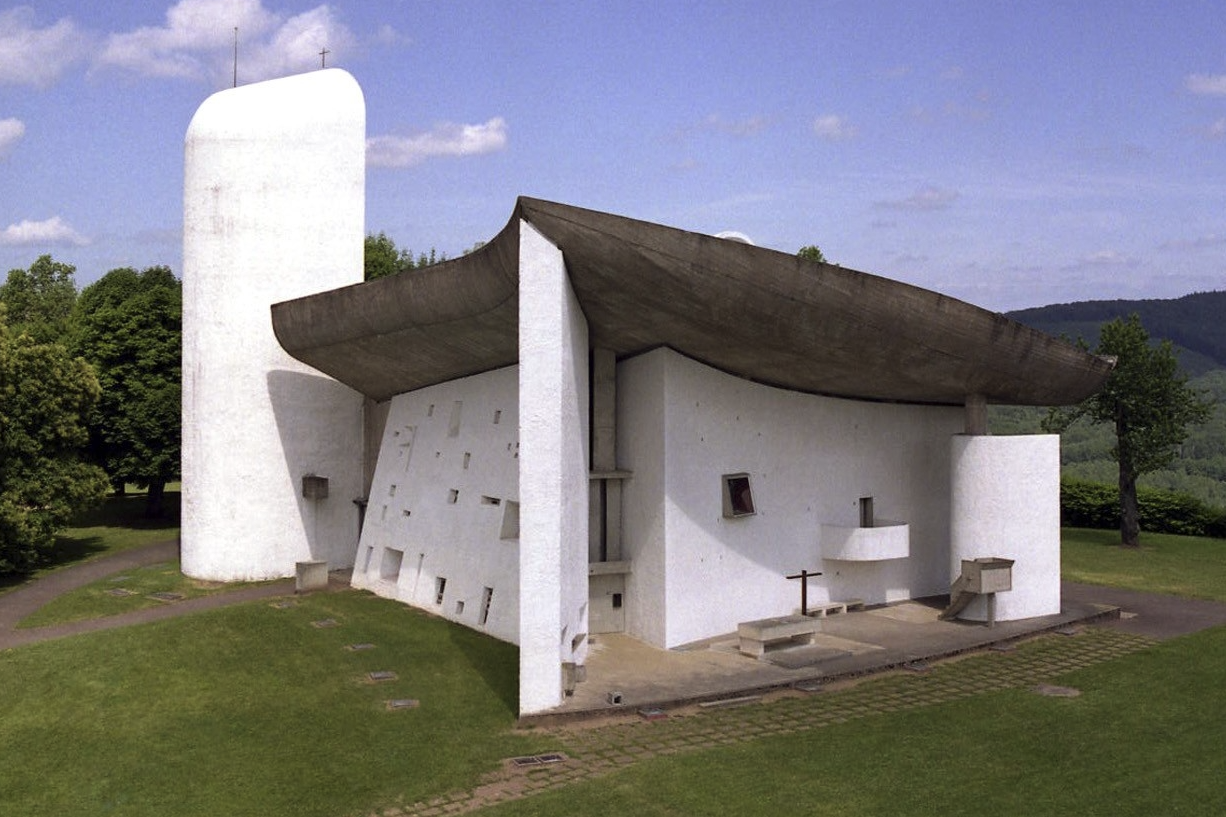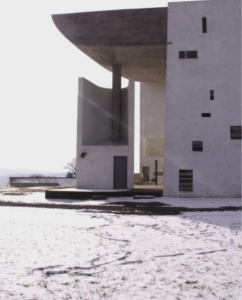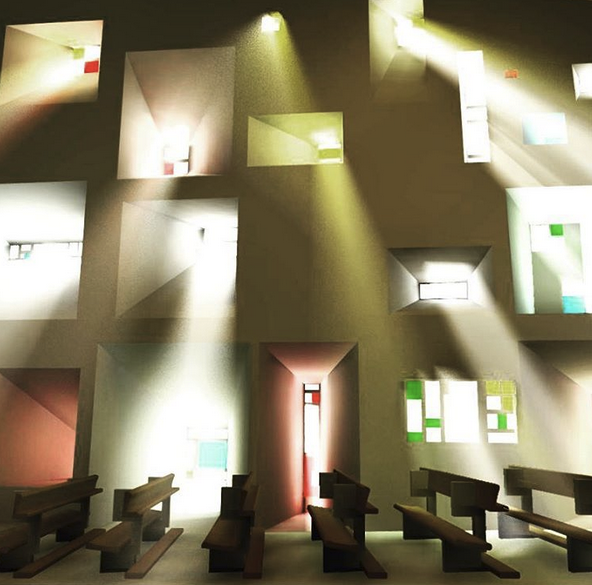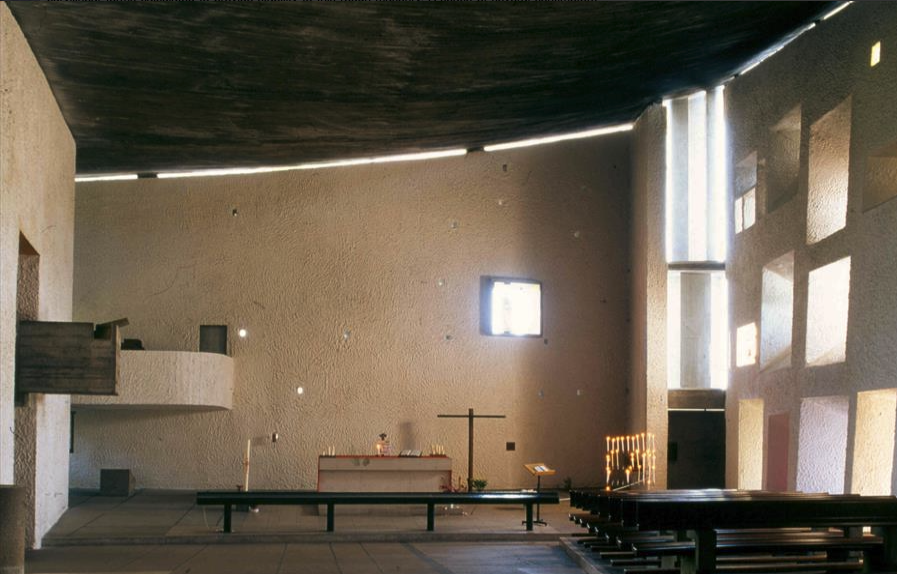

The chapel of Notre Dame du Haut was designed by the great modern architect Le Corbusier, a giant on twentieth century modernism.
The original church that stood on top of the hill above the village of Ronchamp was destroyed by artillery fire during the Second World War. The site is visible from miles around. To the west lies a plateau on which the old church had stood. This flat area of ground falls away to the southeast towards the approach.
When Le Corbusier was first approached to design the new church he declined the commission, but was eventually persuaded, on the proviso that he was given a free rein in the church’s design.
The resulting building is a reflection of Le Corbusier’s metaphysical belief in nature and the idea for its form was conceived on his first visit to the site. Standing on the high plateau, he sketched the four horizons and these drawings “which unlocked, architecturally, the echo, the visual echoing the realm of shape”.
Two days later these four lines emerged as a plan enclosing “ineffable space”, the landscape flowing around and through the building. The huge raw concrete (béton brut) walls curve inwards and outwards containing the central space and three smaller chapels. The south wall lunges in towards the main entrance which is sucked into the building by the curved mass of the south chapel. To the west, the wall bulges out to contain the confessionals and then curves on and around to meet the north wall at the junction of the door. The concave form of the west wall is emphasised by the east facade which curves inwards to welcome and embrace the pilgrims. Atop these walls is a massive curving roof which dips down to the east and appears to float just above the building, supported on slender piers that form a clerestory on the south and east side. The church has three, curved towers, each with a flat face that is pierced by horizontal and vertical sits, allowing light to enter the chapel from north, east, and west. Light also filters through the many pierced openings on the great south wall. The effect is ethereal and numinous.

The eastern end – a juxtaposition of forms (© Walti Goehner / Pixabay)
Internally, conventional Catholic iconography is limited to the hand painted glazing (executed by Le Corbusier himself) and the great wooden cross.

The south wall
(photo Stephen Holmgren)
The overwhelming impression of the building is one of a huge, white, organic, abstract sculpture. Le Corbusier has produced a church that has grown from nature, for nature. The twilight interior and beautiful use of light seems to speak of all churches. By the use of natural form Le Corbusier has produced a building which is sacred and timeless, looking both to the past and future.

Towards the alter
(Photo Paul Kozlowski)
With thanks to © AONDH for the featured photograph